|
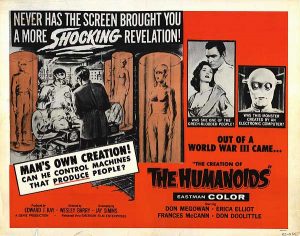
Synopsis:
After a nuclear holocaust in which robots (referred to as “Clickers”) have begun to outnumber humans, a scientist (Don Doolittle) works with two renegade Clickers (George Milan and Dudley Manlove) to create increasingly human-like androids; meanwhile, the head of an underground anti-Clicker society known as the Order of Flesh and Blood (Don Megowan) — whose sister (Frances McCann) is living “in rapport” with a Clicker (David Cross) — falls in love with a beautiful scientist (Erica Elliott) he feels eerily connected to.
|
|
Genres, Themes, Actors, and Directors:
- Androids and Clones
- Mistaken or Hidden Identities
- Robots
- Science Fiction
Review:
Perhaps best known as one of Andy Warhol’s favorite films, this low-budget sci-fi post-holocaust flick is — as DVD Savant writes — “one weird movie”. In addition to featuring, shall we say, unexceptional performances, it’s incredibly talky (and literate), coming across more like a staged play than a cinematic experience; DVD Savant notes that it may have less than 100 camera set-ups and is comprised of only 4 to 5 major scenes (and this reviewer admits to falling asleep late at night during my attempted first viewing). However, what’s actually said is bold and interesting enough to capture one’s attention, and worth listening to closely. To cite DVD Savant once again:
The film’s political sophistication is still timely. The Order of Flesh and Blood is a radical minority that wields undue political power. It espouses a reactionary definition of “human-ness” and seeks to destroy inferior imitations, an aim that seems chauvinistic and “racist” considering that mankind is dying out and needs its robots. Members of The Order wear Civil War Confederate uniform pants and caps, suggesting the Civil Rights issue; the word “Clicker” is a demeaning epithet comparable to the “N” word. The Order also carries a ceremonial dagger, as did the Nazi elite. It uses thug tactics to intimidate ordinary policemen, and plants bombs like modern terrorists. The worst horror Cragis [Megowan] can imagine is mechanized miscegenation, a mixed marriage between human and robot.
Savant’s entire insightful review is worth reading, so I humbly refer readers there for more in-depth analysis. Also worth noting are the starkly minimalist and brightly colored sets, as well as the effective make-up done on the Clickers, whose eyes are (literally) piercingly silver behind enormous contact lenses.
Redeeming Qualities and Moments:
- Effectively minimalist sets and costumes
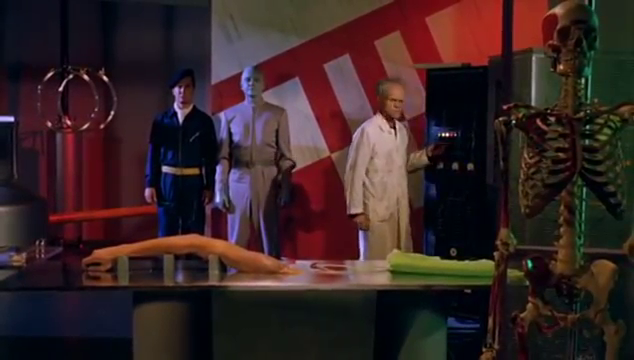
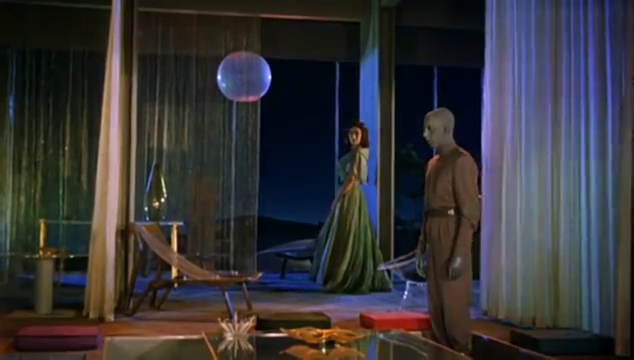
- Jack Pierce’s make-up designs
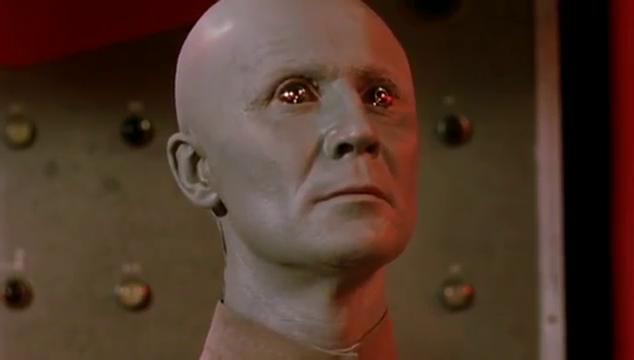
- Hal Mohr’s cinematography
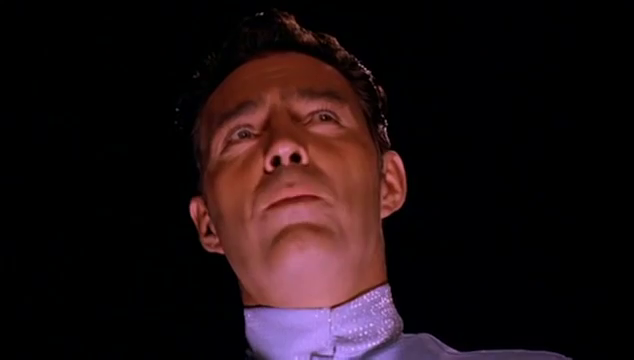
- An unusually literate script
Must See?
Yes, once, as a curiosity — but be sure to watch it when you’re wide awake and can focus. Listed as a Camp Classic and a Cult Movie in the back of Peary’s book.
Categories
Links:
|





One thought on “Creation of the Humanoids, The (1962)”
First viewing. Must-see for those seeking a genuine cult item. Those who ‘fall under its spell’ are very likely to want a repeat viewing or two, to savor the fullness of its weirdness.
Some may find this film somewhat hard-to-follow early on – but, if you stick with it and pay attention, everything becomes clear-enough by film’s end. By then, your head will have had its fill of fun working out the film’s symbolic points.
While watching, you’re likely to be ping-ponging with “Is this good or is it bad?” That’s because it’s a mix of both – but the bad is not that bad: the low budget (though sometimes creatively compensated) doesn’t help; some of the acting is a bit much (but some of it is surprisingly effective); the last (and talkiest and most static) sequence seems to go on forever and sometimes in circles.
Still…though one can perhaps go on about the some of the film’s negative aspects, it’s not dull.
I don’t think I’d put this in the camp category but it definitely has moments that are unintentionally funny. Part of that is the result of the required other-worldly tone – but some of it is the result of just plain seeming silly.
All told, I can’t quite agree (as some have said) that this is a film that gives Ed Wood’s work real competition. It’s not operating on that level of ‘incompetence’ – it’s rather intelligent, overall. I plan to watch it again at some point – it’s a tasty little cult gem.